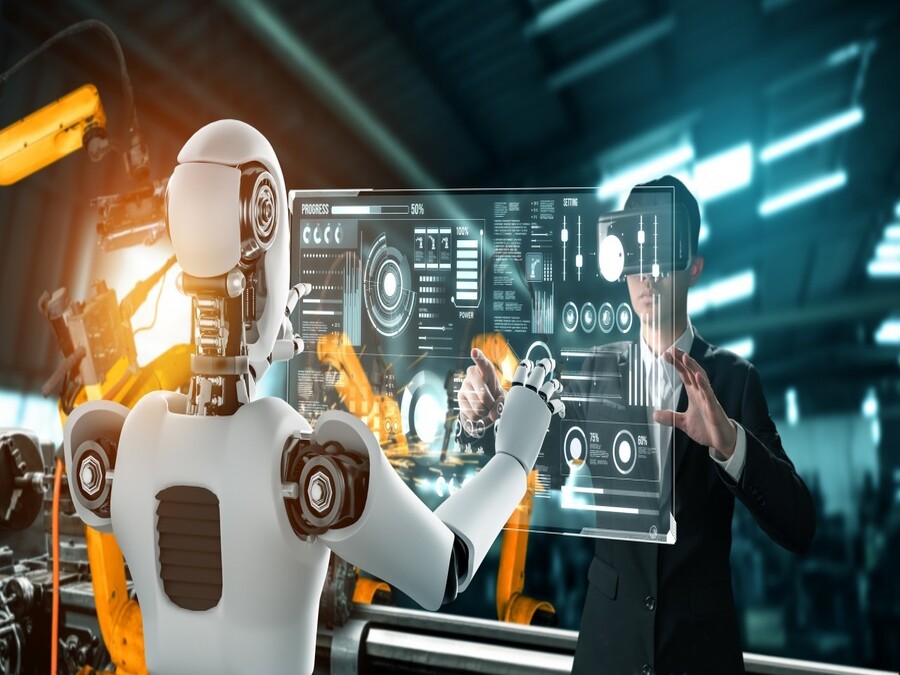The Journey Towards Human-Like Senses in Robots
Artificial Intelligence (AI) has long been at the forefront of technological advancement, constantly pushing boundaries and redefining the capabilities of machines. Within the realm of AI, one of the most intriguing and transformative areas is the development of robots with human-like senses. This isn’t just about creating more advanced machines; it’s about delving into the complexities of human perception and cognition, aiming to replicate and enhance these capabilities in robotic systems.
Understanding Human Perception
Humans rely on a complex array of senses—sight, hearing, touch, taste, and smell—to navigate and interact with their environment seamlessly. These senses work in harmony, providing a nuanced understanding of the world around us. For robots to emulate human capabilities effectively, they must possess a similar range of sensory inputs and the ability to process and integrate this information cohesively.
Recent Advancements in Sensory Robotics
In recent years, significant progress has been made in the development of robots with multi-sensory integration. Notable advancements include the integration of tactile and visual sensors, allowing robots to interact with objects intuitively. For instance, tactile sensors enable robots to detect textures and pressures, while visual sensors provide information about shape and color. This integration empowers robots to make informed decisions based on a combination of sensory inputs, mirroring human-like interaction with the physical world.
Challenges in Sensory Robotics
One of the primary challenges in developing robots with almost human-like senses is real-time processing and interpretation of sensory data. Human perception is not just about receiving sensory inputs but also about contextualizing and making sense of them. To achieve a comparable level of sophistication, robots require advanced algorithms and computational capabilities to analyze and respond to sensory information dynamically.
Multi-Sensory Integration
The concept of multi-sensory integration extends beyond touch and vision. Researchers are exploring the integration of other senses such as hearing and smell. Imagine a robot that can not only see and touch but also hear and smell—it opens up a plethora of possibilities across various applications.
Applications of Multi-Sensory Robots
Healthcare: Robots with advanced sensory capabilities can assist medical professionals in diagnosis and treatment by providing detailed sensory feedback. For example, auditory sensors can detect irregularities in heartbeats, while olfactory sensors can identify health-related scents.
Exploration and Disaster Response: Multi-sensory robots can navigate complex and hazardous environments autonomously. They can detect gas leaks by smell, identify potential dangers by sound, and respond effectively to stimuli.
Human-Robot Interaction: Enhanced sensory capabilities enable robots to better understand and adapt to human behavior and preferences, fostering seamless collaboration in various work environments.
Ethical Considerations
Despite the technological advancements, challenges remain in addressing ethical concerns such as privacy, consent, and the societal implications of highly perceptive robots. Balancing technological progress with ethical considerations is crucial for responsible development and deployment of sensory robotics.
International Efforts in Sensory Robotics
United States: Leading institutions like MIT and Stanford are pioneering research in robotic perception and sensory capabilities.
Japan: Companies like Toyota and Honda are investing in advanced robotics, focusing on improving robot perception through vision systems and tactile sensors.
European Union: Countries within the EU are actively contributing to the development of robots with human-like senses, funding initiatives aimed at advancing robotic perception and cognition.
South Korea: Known for significant investments in robotics, South Korea is focusing on enhancing robot perception through sensor technologies and machine learning.
China: Emerging as a major player in robotics, China’s investments in AI and automation are driving advancements in robot perception and interaction capabilities.
The Rise of Humanoid Robots
The evolution of humanoid robots from concept to real-world applications is a testament to technological progress. Overcoming challenges such as the uncanny valley effect and addressing concerns about integration into society are crucial steps towards wider acceptance and adoption of humanoid robots.
Current Uses and Market Trends
Hospitality: Humanoid robots are already serving customers in various roles, from bartenders to hotel concierges.
Education: Robots are actively engaged in educational settings, assisting with teaching and content creation.
Healthcare: Humanoid robots are aiding in healthcare tasks, from communicating patient information to measuring vital signs.
Challenges and Future Prospects
While progress has been made, challenges persist in bridging the gap between experimental success and practical applications. Addressing concerns about safety, collaboration, and societal impact is essential for the widespread integration of humanoid robots with human-like senses.
Multisensory Integration and Real-World Applications
Advancements in AI and sensory technologies are steering humanoid robots towards a more human-like experience. From sorting robots in warehouses to gas-detecting robots in hazardous environments, these machines are reshaping industries and human-robot interaction.
Rapid Evolution: AI’s Instant Creation of Walking Robots
Pioneering artificial intelligence (AI) has astoundingly synthesized the design of a functional walking robot in a matter of seconds, illustrating a rapid-fire evolution in stark contrast to nature’s billion-year journey.
This AI, operational on a modest personal computer, crafts entirely innovative structures from scratch, distinguishing it from other AI models reliant on colossal data and high-power computing. The robot, emerging from a straightforward “design a walker” prompt, evolved from an immobile block to a bizarre, porously-holed, three-legged entity, capable of slow, steady locomotion.
Paradigm Shift in Design and Applications
Representing more than mere mechanical achievement, this AI-designed organism may mark a paradigm shift, offering a novel, unconstrained perspective on design, innovation, and potential applications in fields ranging from search-and-rescue to medical nanotechnology.
The development of robots with almost human-like senses represents a significant leap forward in robotics. As technology continues to evolve, the integration of sensory capabilities brings us closer to a future where robots seamlessly collaborate with humans, enhancing efficiency and safety across various domains. Humanoid robots are no longer just a vision of the future; they are becoming an integral part of our present, driving innovation and transforming the way we interact with technology.
Featured image
Source:

